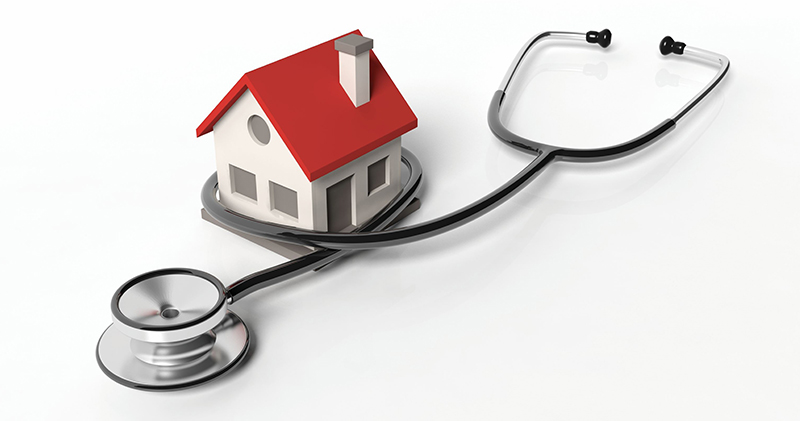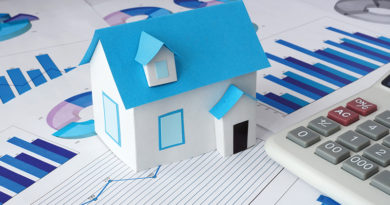Sensing An Opportunity
By Stewart Schley
Is home care for the elderly cable’s next HBO?
It’s 5:45 p.m. when the environmental sensor affixed near your dad’s stove detects a rise in temperature and tells a network-connected web portal what it knows. The reaction is a big yawn. So what? It’s dinner time. Of course there’s something brewing in the kitchen. Carry on.
But let’s say the same reading of an elevated temperature occurs at 12:30 in the morning. Now, a different scenario presents. True, it’s possible dad could be fixing a midnight snack. But there’s also a chance something concerning is going on.
Just to be on the safe side, the home care app emits an alarm message that lands on your mobile phone, signaling that you might want to check in on the guy, even though you live in New York and he’s in Iowa. So you do. But rather than wake dad up immediately with a phone call, you look around the kitchen through a digital camera attached to the wall. And there it is: the telltale glow of the indicator lamp associated with the forward burner. Looks like Pops did indeed warm up a little milk, but forgot to turn the stove all the way off. You give him a quick call, catching him just before he nods back off. “Dad,” you say. “Check the stove. Looks like you forgot something.” Crisis averted.
That scenario is just one of thousands that can be conjured to explain the promise of a new breed of home-care systems that might just do for the cable industry what HBO did in the 1970s: usher in a whole new category of business possibility. As interest in the concept known as “aging in place” begins to rise, so does the possibility of using networks and sensors to help caregivers and family members keep tabs on the daily routines of those they care for.
Booming market
The notion is more than just a sort of Jetson-esque pipe dream. A recent forecast from the Consumer Technology Association sees tech revenues for technology and applications for home care reaching $29.2 billion in the U.S. by 2022. CTA and others see a boom coming in the category of networked home care as an aging U.S. population looks for alternatives to assisted-living facilities that commonly uproot seniors and those with disabilities from the comfort of familiar homes.
It was instructive to see this market examined up-close at the SCTE•ISBE’s 2019 Cable-Tec Expo in New Orleans, where executives talked about where cable might fit into the picture.
One takeaway is that the cable industry wants to do more than merely provide the background plumbing that allows sensors to communicate with remote servers and applications. Listening to Comcast Innovation Fellow Mark Francisco talk about near-term implementation ideas, it was clear that Francisco and Comcast have done some deep homework in this area. One conclusion they’ve reached is that early adoptees are likely to be professional caretakers and family members, not necessarily elderly citizens themselves. He thinks demand might spring from the concept of a “peace of mind” positioning approach.
Before there’s any positioning to be done, however, cablecos and their vendor partners have lots of details to work through. Paramount among them is perfecting the art of data analysis and reporting. “It’s not as simple as sticking a sensor in a wall,” said Thomas Priore, VP of Architecture for iEldra, a Colorado company that develops passive patient monitoring systems.
“It’s more about data collection and what you do with it.” That, and batteries. Making sure sensors remain powered at all times is one of a myriad of operational considerations providers will have to manage. “You can’t rely on the customer to just pop them in,” Priore observed.
These concerns reflect the level of minutiae the cable industry and its technology partners will have to resolve if they want to play serious roles here. Hank Heijnen, a Technicolor Inc. project leader, pointed out that one critical competency is teaching home-sensor systems to make contextual distinctions about exactly what it is they’re sensing. Thus, the example about the hot stove. It’s not just the environmental condition that’s being detected, it’s the surrounding context and the possibility of abnormality. The detection of a few yaps from the terrier next door in the afternoon may signal merely that the mail carrier just stopped by. An elongated, high-pitched session of barking at 3 a.m. may be cause for deeper concern.
The sheer volume of considerations seems daunting. Heijnen pointed out home-sensor systems must be trained to recognize and distinguish from hundreds of inputs. On the audio front alone, a sprawling range of sounds, from window glass breaking to gunshots, must be recognized and evaluated. Once recorded and catalogued, these sounds can be poured into a sort of burbling stew of data that artificial intelligence systems can begin to study, understand and react to.
Far from home
For an industry that grew up sending TV signals through one-way networks, the idea of monitoring for broken windows and signs of distress might seem a bit far-fetched. But Francisco and others see some symmetry with terrain cable already has mastered. Comcast, for example, has emerged as a significant player in the home security market, with more than 1.3 million homes outfitted with cameras, entry sensors and more, according to Comcast’s second-quarter 2019 earnings report. Making the leap from maintaining a front-porch camera to keeping tabs on the kitchen temperature won’t be easy, but at least there’s the outline of a path from one to the next.
To be sure, cable’s only one aspiring player in what’s bound to be a busy market. As with home security or video streaming, third-party packages will compete with cable’s own branded offerings to capture market share. But that doesn’t mean cable can’t come to the table in a significant way. As with almost every subscription-backed product or service the industry offers — from linear pay-television to broadband to security to wireless phone service — there may be meaningful advantages in the ability to combine lots of offerings under a common presentation, delivery and billing framework. The day when an elder-care package is combined with HBO or Showtime in an everyday cable bundle is probably still a long way from reality. But the fact that cable industry technologists already are exploring intricacies of the craft, from ways to keep batteries charged to schemes for marketing to homecare providers, suggests cable has some serious determination here.
That much was underscored at Cable-Tec Expo as CableLabs President/CEO Phil McKinney pressed “play” on a video produced under the banner of the R&D organization’s “Near Future” series. In it, an 86-year old widower (portrayed by the father of film director Ron Howard) enthuses about the ability to stay connected to friends and family with the aid of a smart-home array of sensors, and also with assistance from “Cookie,” an intelligent robot who does everything from keeping tabs on the car reservation to reminding our protagonist that it’s a bit chilly outside. The video is a delight to watch, even if it is a bit fanciful, and even if the applications it showcases aren’t quite ready for mass deployment just yet. Watching a lively senior citizen interact with a robot named Cookie is irresistibly provocative. And as we heard at Cable-Tec Expo, it might be the sort of application that fits just fine within cable’s bundled-service wheelhouse.

 Stewart Schley,
Stewart Schley,
Media/Telecom Industry Analyst
stewart@stewartschley.com
Stewart has been writing about business subjects for more than 20 years for publications including Multichannel News, CED Magazine and Kagan World Media. He was the founding editor of Cable World magazine; the author of Fast Forward: Video on Demand and the Future of Television; and the co-author of Planet Broadband with Dr. Rouzbeh Yassini. Stewart is a contributing analyst for One Touch Intelligence.
Credit: Shutterstock




